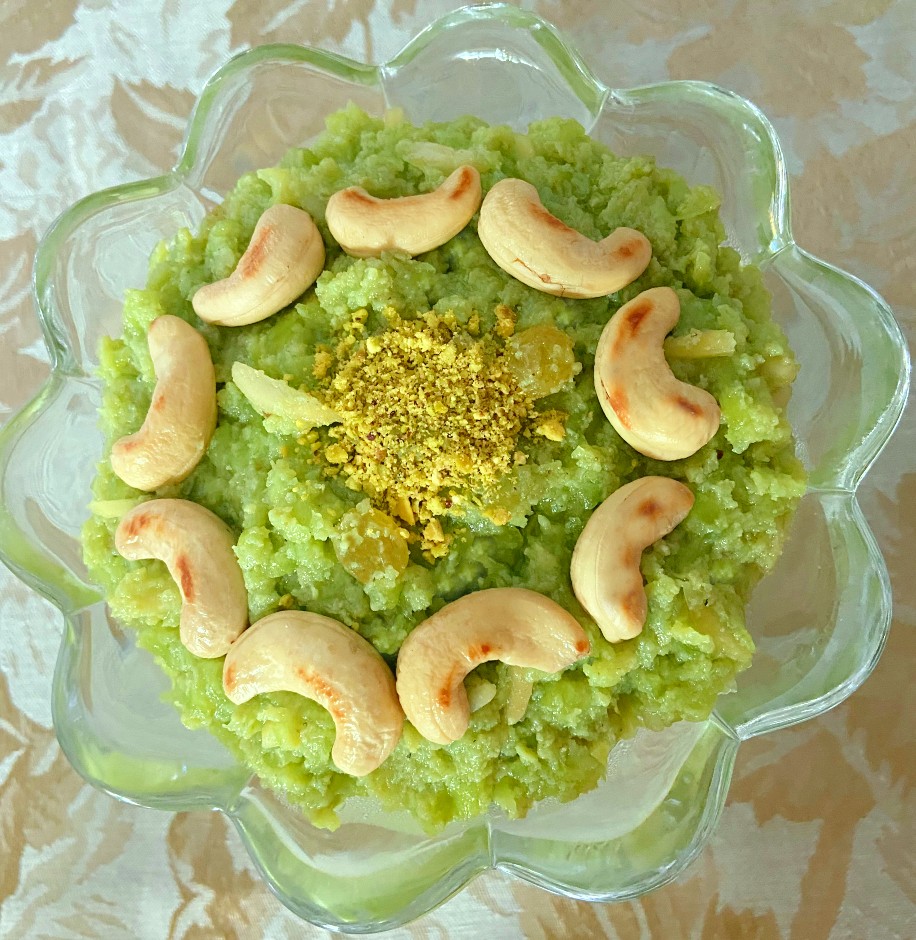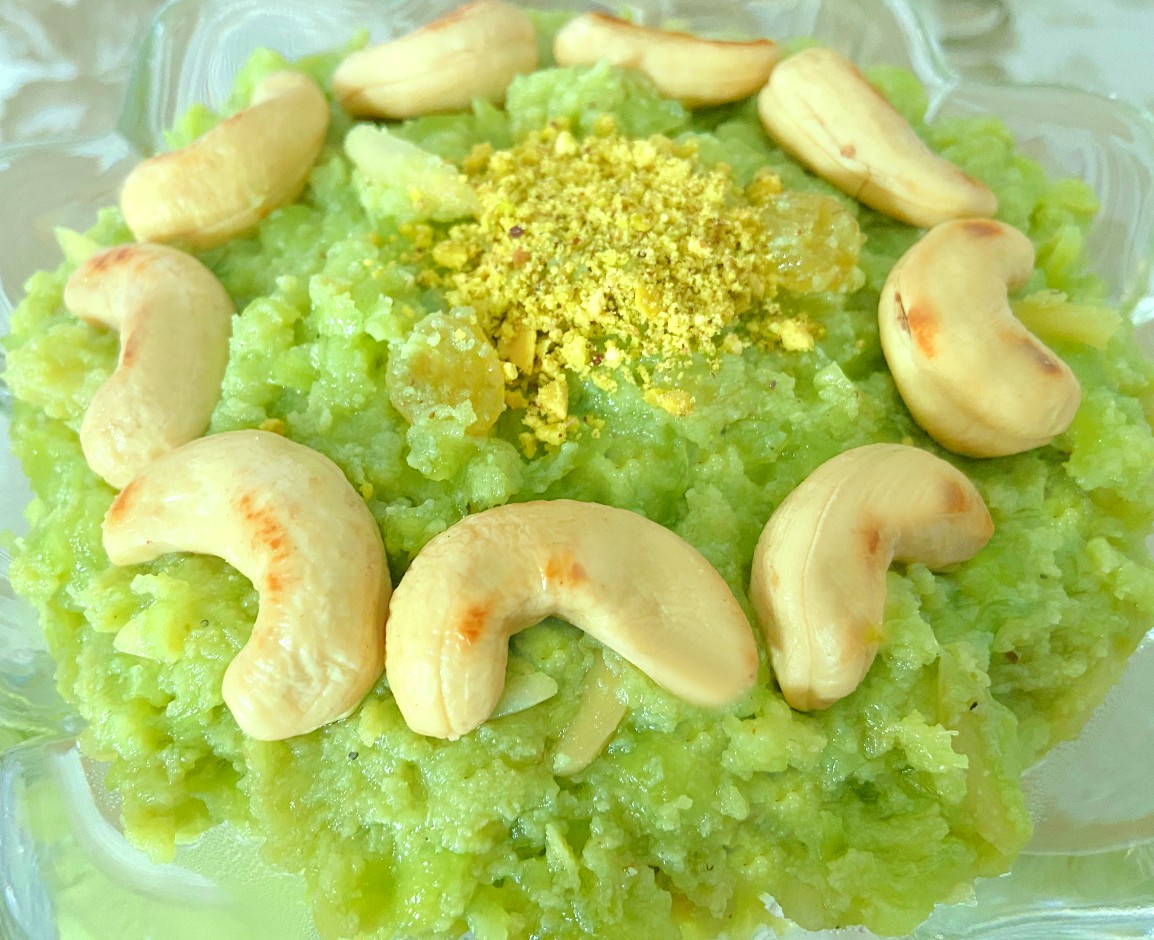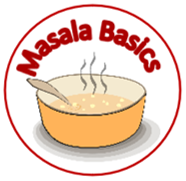
Lauki Halwa is a well known dessert in the Indian Subcontinent. Lauki is also known as dudhi, calabash, or Bottle Gourd. It grows like a vine and the fruit hangs from it. It a light green exterior color, with white flesh and seeds inside. It grows in a few different shapes from round to long.
Fun fact: did you know they are left on the vine to dry out and harden. Then they are hollowed out and used as containers for storing food and water. They are also used to make musical instruments like the sitar! It is also popular to drink the juice of bottle gourd, however excessive amounts has been known to cause stomach issues.
Well one of my favorite ways to enjoy Lauki is to make a halwa out of it. It is actually made very similar to Gajar (carrot) halwa. Lauki is grated, the water is squeezed out, then cooked in milk till it is fully absorbed. Sugar is added to sweeten it and then flavored with cardamom and rose water and cooked in ghee. Nuts inside and on top for an added crunch. It is a heavenly bite of a halwa that has a shredded texture with the richness of the milk solids left and the crunch of nuts with an amazing floral fragrance.
Although the flesh is white, the final halwa is typically a light green color which comes from using a hint of green food coloring. This is of course optional. the color will be more beige or light brown if no color is used.
It can be enjoyed hot, warm or even tastes great cold. It is great option for entertaining because it can be made ahead and then frozen till needed. So plan ahead for your celebrations and gatherings, make it ahead and cross off dessert from your to do list. Like most halwas it does take some stirring, but the elbow grease is well worth it!
Here is the step by step recipe, try it out.
Makes: 4 -6 servings
Time: 45 mins

Ingredients:
- 1 large Lauki about 4 cups grated
- 1 cup sugar
- 2 tbsp ghee or butter
- 1 can of Evaporated Milk (14oz)
- 1/2 cup Milk Powder
- 1/2 Cup almonds or pistachios or cashews (chopped, slivered, or sliced)
- 1/2 tsp elaichi powder (cardamom)
- 1tsp Rose or Kewra water
- 1/8 cup golden raisins
- Optional: 2 drops of green food coloring
- Garnish: nuts, grated Khoya/mawa
- Peel the Lauki, cut in quarters lengthwise, remove the large seeds from the center. Grate it. You can use a food processor to make it quicker for larger quantities or just a hand grater will work just fine.
- Using a cloth or just with your hands, squeeze out the excess liquid from the grated lauki which can sometimes be bitter.
- In a non stick pot on medium heat, add the grated lauki and cook for 10 mins, stirring in between. This will further help it to dry out and cook as well.
- Add milk and green food color and cook for 20 mins. Stir occasionally so it does not stick to the bottom. You can use the lid if needed to partially cover the pot so the bubbles don’t splatter out, but do not fully cover the pot.
- In another small frying pan or tadka pan, add ghee, raisins and nuts and roast on medium for 3 mins till lightly brown.
- Add the above roasted mixture to the lauki, along with sugar, elaichi, and rose water. Cook for 15 mins till the ghee separates again and all the liquid is absorbed. When you see the oil start separating around the edges and the halwa comes together like a ball, the halwa is ready.
- Serve it hot, warm, or cold garnished with nuts on top.
Tips:
- For larger quantities, it is much faster to use the food processor to grate the Lauki.
- remember to remove the large seeds from the middle, small ones are ok to keep. Also squeeze out the liquid as it can be bitter in taste which is not needed in this dessert.
- Store in an airtight container in the freezer for up to 3 months. Thaw at room temperature and reheat before serving.
- To make it richer, you can add grated khoya/mawa into the dish to give it extra richness, however it turns the dish more creamy and less textured. You can add grated khoya as a garnish on top at the end to avoid that but completely optional.
- For other dessert ideas, check out more recipes in the Sweets Section.
